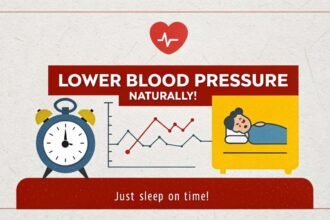After a long, hectic day, the last thing you want is your racing mind disrupting precious sleep. But for the 80% of adults reporting frequent stress, thoughts often spin out of control come nighttime – sabotaging rest and mental health.
Fortunately, what you do in the 60 minutes before bedtime sets the stage for how smoothly you’ll transition into slumber. By intentionally incorporating relaxing rituals into your wind-down routine, you can give mounting anxiety and persistent stress the heave-ho.
Read on for 5 powerful yet simple science-backed techniques to calm the storm within so you drift off faster and awake renewed.
1. Dim the Lights, Enhance Your Nights: Mindfulness Meditation

Like trying to see stars in the daytime sky, the dazzling stimulus overload of modern life obscures views of our inner universe. Disconnecting from perpetual digital and social bombardment reopens a window to self-connection, studies confirm one profoundly centering practice – mindfulness meditation – reduces stress biomarkers by up to 50% in 8 weeks.
But how exactly does sitting silently and following your breath elicit such profound peace and resilience?
Mindfulness trains the brain in emotional regulation like nothing else. By continually returning attention with gentle non-judgement to the present no matter how often mind wanders, gray matter concentrates accumulate in areas that govern focus, compassion, and emotional intelligence.
Simultaneously, detecting thoughts/feelings as passing phenomena rather than absolute reality deactivates anxiety pathways. So irritability self-soothes and emotional tempests calm. Over time and consistent practice, mindfulness recalibrates emotional setpoints toward tranquility by rewiring threat perception and response.
The science seals the deal – recent meta-analyses of over 200 studies conclude mindfulness significantly reduces anxiety, depression, stress and pain while boosting self-esteem and life satisfaction.
Fortunately, just 10 minutes daily yields immense benefits if practiced correctly. Here’s how:
- Adopt a comfortable seated position. Close eyes. Relax body by scanning and releasing tension from each part.
- Bring full attention to breath entering/exiting nostrils. Follow each inhalation down to belly rising. Exhale up through body as belly falls.
- When (not if) mind inevitably wanders, gently return focus to breath without self-criticism.
- Repeat for duration, continually redirecting attention to breath sensations with patience and compassion.
Commit to this simple regimen for just 10 minutes nightly after screens off. Be present with the peace that emerges. Over time, what accumulates even faster than stress-induced gray hairs is an ease of being that radiates from the inside-out.
2. Warm Bath Soaks for Body and Soul
Some of history’s greatest thinkers, from Archimedes to Benjamin Franklin, had lightbulb moments while luxuriating in warm baths. Beyond fostering creative flow, thermal hydrotherapy been used for millennia to nourish body, mind and spirit with documented medical benefits as far back as 2000 BC in the Ebers Papyrus.

Modern research now substantiates the myriad restorative properties a good hot soak elicits through physiological cascades that lower stress hormones, reduce inflammation, boost immunity and enhance sleep. Here’s the science behind why and how:
As you gently slide into a tub filled with skin-temperature water between 92-100F, vessels near the skin surface dilate, increasing blood circulation as the heart rate increases to dissipate rising internal heat. This initiates a chain reaction:
- Cardiovascular stimulation coupled with gentle water pressure improves vascular function and oxygenation. [Source]
- Rising internal temperature activates the parasympathetic nervous system to initiate deep relaxation. [Source]
- Buoyancy eases skeletal strain as muscles release chronic tension. [Source]
- Mental distraction and sensory pleasure trigger release of happy neurochemicals like serotonin and dopamine. [Source]
- Heat accelerates metabolism, burning calories similar to low-intensity exercise. [Source]
Combine these mechanisms and stress stands no chance: studies confirm just 10 minutes of warm water immersion slashes the stress-inducing hormone cortisol up to 70% while lowering blood pressure and slowing heart rate.
Meanwhile, as core body temperature peaks then drops post-bath, circadian rhythms sync for rapid sleep induction. In fact, research found water bathers fell asleep 15 minutes faster with 15% deeper non-REM and REM sleep. No wonder historians believe Cleopatra – known for bathing in donkey milk – valued baths “for health and pleasure.”
To leverage the manifold benefits of hydrotherapy before bedtime, steep in skin-temperature to hot water (not scalding) for 10-20 minutes 1-2 hours pre-sleep. Boost relaxation by diffusing calming essential oils; alternately start cooler then increase warmth to amplify vascular effects.
The optimal soak for sleep also uses Epsom salts – magnesium absorption via warm skin optimizes cycles. Then air dry naturally as body heat dissipates to ease into slumber.
Over time, the positive spirals from routine pre-bed baths accumulate exponential wellness perks: lower baseline stress and inflammation, less pain, boosted immunity, healthier heart and arteries, deeper/faster sleep, clearer thinking, brighter mood and smoother skin! Relaxation for the win.
3. Channel Stress Through Written Expression

Uncapping the pen to translate racing thoughts and turbulent feelings into words delivers more than ink on paper; the flow elicits profound neurobiological shifts that regulate stress arousal for healthier functioning. How precisely does journaling help you destress and unwind? Science illuminates key mechanisms:
- Processing emotions through writing stimulates under-activated left brain regions like the ventromedial prefrontal cortex linked to logical reasoning and decision-making. This facilitates more balanced cerebral energy. [Source]
- Putting chaotic thoughts/emotions into language engages top-down cognitive control from frontal regions that modulate amygdala reactivity to tame fight-flight-freeze reactions. [Source]
- Crafting meaning from distressing events transfers neuronal activity from emotion-processing limbic areas to reasoning networks centered in the frontopolar cortex. This aids acceptance. [Source]
- Detailing stressful incidents helps emotionally “complete” traumatic memories which reduces automatic fear reactions driven by the midbrain periaqueductal gray area. [Source]
These integrated brain changes act in concert to help makes sense of worries while dissolving emotional knots into literary coherence. No wonder decades of clinical research reveal structured journaling significantly:
- Lowers ruminative thought patterns underlying anxiety/depression
- Reduces physiological markers of chronic stress like cortisol
- Lessens inflammation underlying countless health conditions
- Improves reasoning, problem-solving and working memory
- Boosts immune cell health and antibody response
While spontaneous free-writing reaps rewards, guiding questions elicit maximum stress relief by ramping reflective insight and positive reappraisal of challenges faced. Before bed, reflect on 2-3 of the following prompts:
- What do I feel grateful for about today?
- Which positive personal strengths/resources helped me navigate recent difficulties?
- What am I looking forward to tomorrow? Next week? Next Month?
- What recent obstacles seem smaller in significance now and why?
- How did I surprises myself or exceed my own expectations recently?
Allot just 10 minutes to ponder and pen responses. Not only will this ritual unravel lingering worries, it builds courage, hope and wisdom overtime by eliciting the highest human qualities latent in every life- changing adversity.
4. Unwind With Soothing Music
Few things soothe jangled nerves and restless mind as completely as the right melody played at the perfect volume. Beyond pleasure for the ears, studies show music tangibly reduces psychological and physiological stress by slowing heart rate, lowering blood pressure and cortisol and boosting satisfaction-related opioids and immune cells.

Brain imaging reveals why tunes exert such hypnotic sway over body, mind and mood. As swirling symphonies hit the eardrum, electrical signals fire along neural networks linking auditory cortex sound-processing regions to ancient limbic emotional centers and the brain stem that controls fight/flight arousal.
This lights up listening pleasure pathways fueled by “reward” neurotransmitter dopamine. But intensity matters – research found classical compositions 10-60 beats slower than resting heart rate sync physiology for maximum calm.
Combining the precise tempo, melody and instrumentation makes certain tracks potent mindfulness meditations in melody to alleviate anxiety fast according to abundant research. Case in point: a meta-analysis of over 5000 cardiac patients found music cut systolic blood pressure 9 points and heart rate 4 beats per minutes – equal to starting a mild anxiety medication!
While personal music taste plays some role in responses, compositions sharing certain evidence-based relaxation criteria elicit unwavering rest according to scientists:
- Slow-paced at 60-80 beats per minute
- Low-pitched instruments like cello, piano or flute
- Gentle crescendos/decrescendos in volume
- No lyrics or minimal chanting
- Nature sounds interwoven harmoniously
Curating and playing select tracks that meet these parameters before bed checks physiological stress reactions. One powerful pre-sleep playlist includes Yiruma’s “River Flows in You”, Beethoven’s “Moonlight Sonata” and Deuter’s “Touching Souls.” Just 15-30 minutes listening nightly tames turbulence through musical medicine that makes falling asleep feel effortless.
5. Master Anxiety By Releasing Muscular Armoring

Much like assembling a fortress against impending attack, the body subconsciously contracts muscles throughout the day to guard against perceived threats – a phenomenon psychologists term bodily armoring. [Source]
As muscles grow progressively tenser, oxygen and nutrients cannot flow freely while waste products and pain-signaling lactic acid accumulate. Left unchecked, chronic contraction manifests as body aches, headaches, poor posture and decreased flexibility.
Yet where the mind goes, energy flows. While physical tension originates as unconscious defense, consciously softening tense areas in the present moment catalyzes profound relaxation.
This simple yet supremely powerful stress relief technique termed progressive muscle relaxation (PMR) involves systematically tensing then relaxing all major muscle groups to discharge legacy tension and anxious energy. Regular practice elicits a domino effect of benefits well-documented in over 200 studies including:
- Drops psychological distress up to 50%
- Reduces cortisol and adrenaline spikes by over 30%
- Lowers blood pressure equal to beta-blocker medication
- Slows heart rate by 8+ beats per minutes
- Upshifts parasympathetic nervous system dominance
- Accelerates skin wound healing by 30%
- Magnifies pain-relieving endorphins lasting hours
The exponential impacts surface rapidly; research on PMR for anxiety consistently demonstrates heart rate slows within minutes alongside 30%+ lowering of cortisol levels after just one 20-minute session!
Yet like wiggling free gradually from a too-tight turtleneck, simply sustaining bodywide relaxation without conscious effort generally proves elusive. This makes practice important.
Before bed, try this starter PMR routine by sitting comfortably and working through two rounds of the following sequence:
- Focus attention completely on right hand and clench fist tightly for 5 seconds.
- Release hand suddenly, allowing muscles to go totally limp. Observe sensations of softness.
- Shift focus to left hand; repeat clenching and releasing.
- Alternate tensing then letting go of each arm, upper back, shoulders, neck, face/jaw, abdomen and each leg.
- Finish by scanning body head to toe for any lingering tension; breathe into tight areas while imagining muscles softening.
Commit to this 10-15 minute routine nightly; then watch all types of anxiety abate exponentially. Sweet dreams!
The Takeaway: Ritualize Rest Hourly
Like stringing pearls one precious moment at a time, how you choose to spend the 60 minutes before sleep sets the stage for what unfolds overnight until dawn. By ritualizing routines scientifically confirmed to reduce stress and ease anxious anticipation, cardiovascular coherence guides you along neural pathwayssignaling “all’s well” so you can rest now.
While no panacea guarantees perpetual peace or wholly eliminates life’s inevitable ups and downs, consciously nurturing tranquility when you can fosters greater resilience in weathering whatever waves eventually come. Making relaxation a priority permits deeper functioning through life’s beautiful moments while granting needed fortitude to navigate adversity.
So as the clock strikes sleep o’clock, dim electronics and emotional turbulence simultaneously. Instead honor self-care with relaxing rituals that speak to mind, body and soul. Prioritize nightly appointments with epiphany through journaling, music or meditation alongside tension taming hot soaks or muscle release.
What matters most is consistency in carving out time catered exclusively to rest, recovery and your wholeness. Establish a relaxing ritual today for exponential wellbeing dividends paid forward exponentially. You deserve nothing less.












